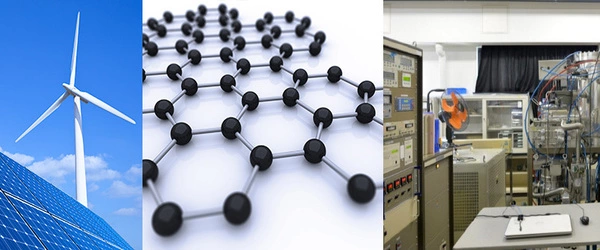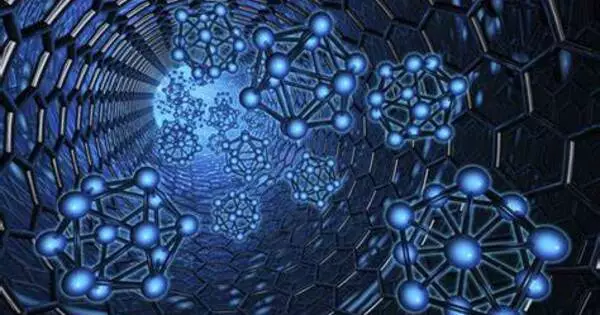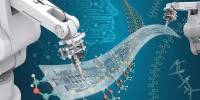A research team has created a high-performance coating material that self-assembles from 2D nanosheets and might considerably increase the shelf life of electronics, energy storage devices, health and safety products, and other products. The scientists are the first to scale up nanomaterial production into viable materials for manufacturing and commercial purposes.
A new self-assembling nanosheet has the potential to significantly expedite the creation of functional and sustainable nanomaterials for electronics, energy storage, health and safety, and other applications.
The novel self-assembling nanosheet, developed by a team led by Lawrence Berkeley National Laboratory (Berkeley Lab), has the potential to greatly increase the shelf life of consumer products. Furthermore, because the new material is recyclable, it may pave the way for a more sustainable manufacturing technique that keeps single-use packaging and electronics out of landfills.
The researchers are the first to create a versatile, high-performance barrier material out of self-assembling nanosheets. The discovery was published online in the journal Nature on November 8th.
Our work overcomes a longstanding hurdle in nanoscience – scaling up nanomaterial synthesis into useful materials for manufacturing and commercial applications, really exciting because this has been decades in the making.
Ting Xu
“Our work overcomes a longstanding hurdle in nanoscience – scaling up nanomaterial synthesis into useful materials for manufacturing and commercial applications,” said Ting Xu, the study’s senior scientist. “It’s really exciting because this has been decades in the making.”
Xu is a senior scientist in Berkeley Lab’s Materials Sciences Division and a UC Berkeley professor of chemistry and materials science and engineering. One difficulty in harvesting nanoscience to generate functional materials is that numerous little parts must come together in order for the nanomaterial to become large enough to be useful. While stacking nanosheets is one of the simplest ways to incorporate nanomaterials into a product, “stacking defects” – gaps between the nanosheets – are unavoidable when dealing with existing nanosheets or nanoplatelets.
“If you visualize building a 3D structure from thin, flat tiles, you’ll have layers up the height of the structure, but you’ll also have gaps throughout each layer wherever two tiles meet,” said first author Emma Vargo, a former graduate student researcher in the Xu group and now a postdoctoral scholar in Berkeley Lab’s Materials Sciences Division. “It’s tempting to reduce the number of gaps by making the tiles bigger, but they become harder to work with,” Vargo said.

The new nanosheet material overcomes the problem of stacking defects by skipping the serial stacked sheet approach altogether. Instead, the team mixed blends of materials that are known to self-assemble into small particles with alternating layers of the component materials, suspended in a solvent. To design the system, the researchers used complex blends of nanoparticles, small molecules, and block copolymer-based supramolecules, all of which are commercially available.
Experiments at the Spallation Neutron Source at Oak Ridge National Laboratory helped the researchers comprehend the early, coarse stages of the mixes’ self-assembly. As the solvent evaporates, the small particles consolidate and spontaneously organize, forming coarsely templating layers before solidifying into thick nanosheets. Instead of being piled one by one in a serial process, the ordered layers form concurrently. The small pieces only need to move a short distance to get organized and close gaps, avoiding the issues associated with moving larger “tiles” and the unavoidable gaps between them.
From a previous study led by Xu, the researchers knew that combining nanocomposite blends containing multiple “building blocks” of various sizes and chemistries, including complex polymers and nanoparticles, would not only adapt to impurities but also unlock a system’s entropy, the inherent disorder in mixtures of materials that Xu’s group harnessed to distribute the material’s building blocks.
The new study builds on this earlier work. The researchers predicted that the complex blend used for the current study would have two ideal properties: In addition to having high entropy to drive the self-assembly of a stack of hundreds of nanosheets formed simultaneously, they also expected that the new nanosheet system would be minimally affected by different surface chemistries. This, they reasoned, would allow the same blend to form a protective barrier on a variety of surfaces, such as the glass screen of an electronic device, or a polyester mask.
Demonstrating a new 2D nanosheet’s ease of self-assembly and high-performance
The researchers sought the assistance of some of the nation’s premier research centers to test the material’s performance as a barrier coating in a variety of applications. The researchers sketched out how each component comes together and assessed their mobilities and the manner in which each component moves around to produce a functioning material during studies at Argonne National Laboratory’s Advanced Photon Source.
Based on these quantitative studies, the researchers created barrier coatings by applying a dilute solution of polymers, organic small molecules, and nanoparticles to a variety of substrates, including a Teflon beaker and membrane, polyester film, thick and thin silicon films, glass, and even a microelectronic device prototype, and then controlling the rate of film formation.
Experiments with a transmission electron microscope at Berkeley Lab’s Molecular Foundry demonstrate that by the time the solvent evaporated, a highly organized layered structure of more than 200 stacked nanosheets with very low defect density had self-assembled on the substrates. Vargo added that the researchers were also able to produce each nanosheet 100 nanometers thick with few holes and gaps, making the material extremely good in preventing the passage of water vapor, volatile organic chemicals, and electrons.
Other investigations at the Molecular Foundry revealed that the material had a lot of potential as a dielectric, which is an insulating “electron barrier” substance frequently used in capacitors for energy storage and computing.
Xu and colleagues demonstrated, in collaboration with researchers from Berkeley Lab’s Energy Technologies Area, that when the material is used to coat porous Teflon membranes (a common material used to make protective face masks), it is highly effective in filtering out volatile organic compounds that can compromise indoor air quality.
Finally, the researchers demonstrated in the Xu lab that the material can be redissolved and recast to generate a new barrier layer. The researchers want to improve the material’s recyclability and add color tunability (it presently comes in blue) to its repertory now that they’ve successfully proved how to readily synthesize a varied functional material for various industrial uses from a single nanomaterial.















